Border Terrier Dog Breed

| Aspect | Details |
|---|---|
| Origin | United Kingdom |
| Birth Era | 18th century |
| Crossbreed | No, purebred |
| Temperament | Affectionate, obedient, good-natured |
| Physique | Small, 11.5-15.5 pounds, wiry |
| Coat | Dense, wiry, weather-resistant double coat |
| Lifespan | 12-15 years |
The Border Terrier, a charming and resilient breed, originates from the hilly border country between England and Scotland. It was developed primarily for hunting foxes and vermin. Characterized by an otter-like head and a wiry, weather-resistant coat, the Border Terrier is a small but sturdy dog. This breed is recognized for its alertness, tenacity, and affectionate nature, making it a popular choice both as a working dog and a family pet.

The coat, which can be red, grizzle and tan, blue and tan, or wheaten, not only contributes to the breed’s distinct look but also serves a practical purpose in protecting the dog in various weather conditions.
Coat Color

The Border Terrier’s coat exhibits a fascinating range of colors, which includes red, grizzle and tan, blue and tan, and wheaten. These colors blend seamlessly with the breed’s natural surroundings, a trait that was advantageous in its historical hunting roles. The outer layer of the coat, rough and wiry, coupled with a soft, dense undercoat, provides not just insulation but also a unique texture.

Regular grooming, including brushing and stripping, is necessary to maintain the health and appearance of the coat, ensuring that the dog remains comfortable throughout the seasons.
Coat Type

The coat of the Border Terrier is a double coat, with the outer layer being wiry and thick, and the undercoat soft and dense. This combination serves as a natural barrier against harsh weather, brambles, and other outdoor elements. The wiry outer coat requires regular grooming to prevent tangling and matting, while hand-stripping twice a year helps to maintain the coat’s natural rugged texture. Proper grooming routines not only keep the coat looking neat but also promote healthy skin by distributing natural oils throughout the coat.

The rough and tumble coat of the Border Terrier is well-suited to Japan’s varying climates, providing insulation against both cold winters and humid summers.
Size

Border Terriers are small but agile dogs, typically standing about 10 to 11 inches at the shoulder. This size is ideal for a dog bred for squeezing through tight spaces during hunts. Despite their small stature, they are surprisingly robust and muscular, a trait that gives them exceptional agility and endurance. Their size also makes them suitable for various living environments, from apartments to large homes with yards, provided they get enough physical and mental stimulation.
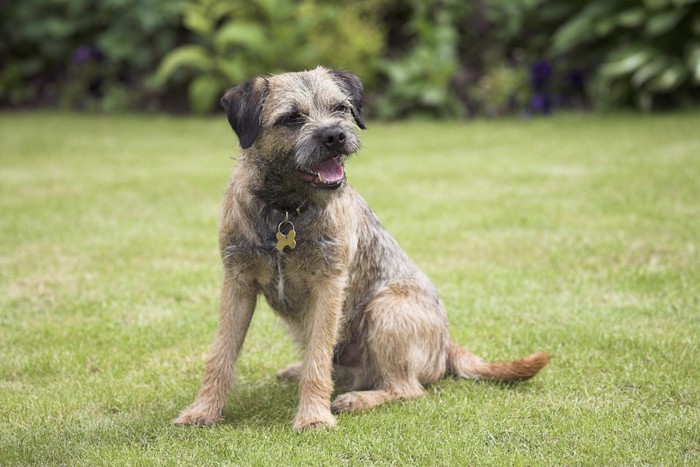
In Japan, the small but sturdy size of the Border Terrier is appreciated for its adaptability to both apartment living and active outdoor lifestyles.
Weight

A healthy Border Terrier typically weighs between 11.5 and 15.5 pounds. This weight range is crucial for maintaining the breed’s agility and overall health. Obesity can be a concern, so it’s important for owners to manage their diet carefully and ensure regular exercise.

A balanced diet tailored to their age, size, and activity level, combined with daily physical activity, helps to keep them in optimal condition.
Lifespan

Border Terriers are known for their longevity, often living between 12 to 15 years. Their lifespan can be attributed to their robust genetic makeup and active lifestyle.Consistent care, including regular veterinary check-ups, a nutritious diet, and ample exercise, plays a significant role in ensuring a long and healthy life for these dogs.

Their long lifespan allows them to form deep, enduring bonds with their families.
Trainability

Border Terriers are highly trainable, known for their intelligence and eagerness to learn. They respond well to positive reinforcement methods such as treats, praise, and play.
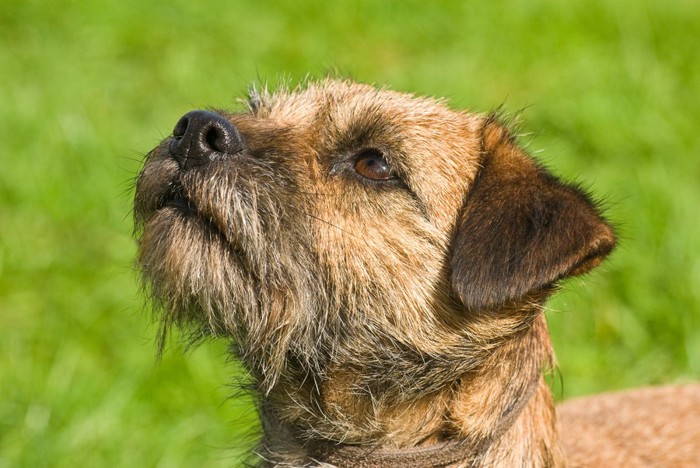
Consistent, patient training from an early age is crucial, as it helps in channeling their energy and natural instincts in a positive direction. Socialization is also key, exposing them to various people, animals, and environments to develop a well-rounded temperament.
Exercise
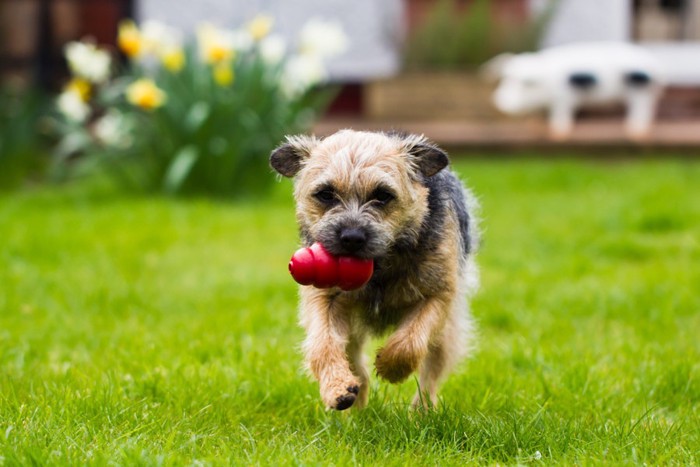
Regular exercise is vital for the Border Terrier’s physical and mental health. They need daily activities like walks, playtime, and opportunities for safe exploration.

Participation in dog sports, such as agility, flyball, and earthdog trials, is also beneficial, providing both physical exercise and mental stimulation. These activities cater to their natural instincts and help in maintaining their overall well-being.
Feeding

Proper nutrition is essential for the Border Terrier. A balanced diet suitable for their age, size, and energy level is important. It’s crucial to avoid overfeeding, as they can be prone to obesity.

Monitoring portion sizes, providing regular meals rather than free feeding, and ensuring they get adequate exercise are key factors in maintaining their health. Consulting a veterinarian for dietary recommendations is always advisable.
Temperament

The Border Terrier is known for its friendly, affectionate, and adaptable temperament. They are generally good with children and other pets, especially when socialized from a young age. Their alert, curious nature makes them excellent companions, always ready for adventure or relaxation. However, their strong prey drive and hunting instincts require mindful supervision, particularly around small animals.

The friendly and adaptable temperament of the Border Terrier makes it a beloved pet in Japan, fitting well into the cultural emphasis on harmony and social interaction.
History
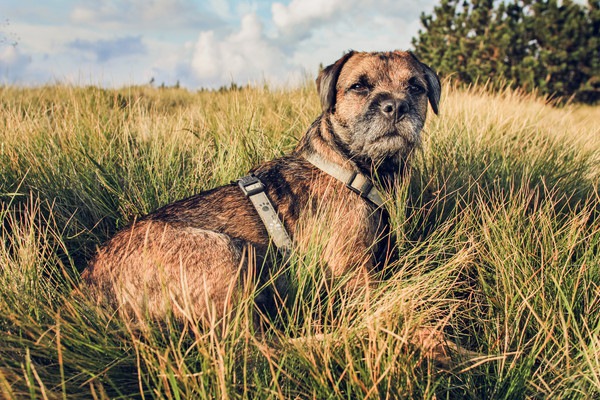
Dating back to the 18th century, the Border Terrier was bred in the border counties between England and Scotland. Their primary role was to assist in foxhunts by driving the foxes out of their hiding places. Their small size, agility, and toughness made them ideal for navigating the rugged terrain.

Over time, their endearing personality and adaptability have made them a beloved pet beyond their hunting origins.
Grooming
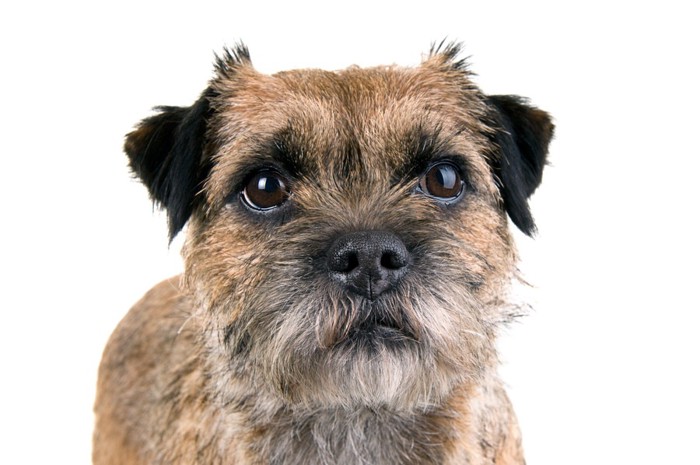
Grooming is an essential aspect of caring for a Border Terrier. Regular brushing, along with hand-stripping the coat twice a year, is crucial for maintaining their distinctive appearance. Attention should also be paid to their nails, ears, and teeth, with regular trimming, cleaning, and brushing, respectively, to prevent health issues and maintain overall hygiene.

Grooming a Border Terrier in Japan involves regular brushing and occasional professional grooming, mirroring the Japanese value of cleanliness and neatness.
Health

Border Terriers are generally a healthy breed, but they can be susceptible to certain conditions like hip dysplasia, heart problems, and hereditary cataracts. Regular veterinary care, a healthy diet, and sufficient exercise can help mitigate these risks.

It’s important for owners to be aware of these potential health issues and to seek prompt veterinary attention for any concerns.

